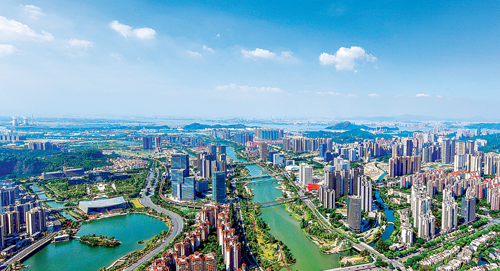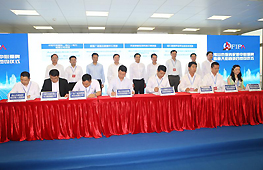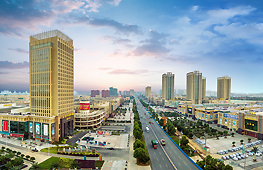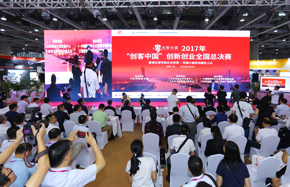Platforms coming to fortify Nansha's import role
 |
|
The view of Nansha district, Guangzhou. CHINA DAILY |
Nansha district in Guangzhou, Guangdong province will present a holistic picture of the work in its demonstration zone, which was established in November 2020, as well as of results achieved through several effective measures, at the fourth China International Import Expo from Nov 5 to 10.
Six import platforms will officially go into operation at the CIIE. They focus on quality goods across the globe, food and wine, cold chain logistics, automobiles, airplanes and grain.
The six import platforms are part of Nansha's plan to refine support strategies for its demonstration zone. In July, the government launched a series of special policies in platform construction, facilities improvement, building of key categories and service support.
The zone aims to double its import volume of over-the-counter medicine, food and cultural artwork by the end of this year. It also aims to create a three-level innovative environment with high standards. "Policies and rules are adjusted according to market demand," a local official said. "Innovative services can compete with first-class global counterparts. And business models follow industry trends."
To cultivate new foreign trade formats, a distribution center for medicine was put into use on April 23. The center was set up to offer a fast pass to overseas pharmaceutical products listed in Hong Kong and Macao or approved for import and export licenses on the Chinese mainland.
On April 15, an international freight center was established in Nansha, which connects airports in the Guangdong-Hong Kong-Macao Greater Bay Area. In May, Shenzhen's airport joined the center.
The district has also been working to improve its digital service trade platform. Its customs declaration service system has been collaborating with seven countries. Nansha's role as a shipping hub has been comprehensively enhanced, according to the government.
Nansha has comprehensively upgraded its customs system to become smarter, thus reducing the overall clearance time for imports and exports by more than 50 percent in 2020. The fault-tolerant and error-correcting mechanism of imported goods having submitted declarations in advance has greatly improved. Goods can be shipped and exported immediately after arriving at Nansha Port, with most procedures finished in other ports before.
In addition to its customs system, Nansha has updated its financial system to accommodate international trade.
It has launched cross-border finance pilots with focuses on free trade accounts, two-way cross-border RMB financing and foreign exchange management.
To ensure enterprises can easily obtain the advanced Authorized Economic Operator recognition from customs, the district has invented a method called Xinyi+AEO. By means of simulation assessment and testing, enterprises can enjoy multiple upgraded services offered by the government. According to local officials, Nansha will echo the nation's call for high-quality trade development, supply-side structural reform and high-standard opening-up in the near future. Nansha will leverage its abilities and build itself into a demonstration district with an innovative supervision system, complete service functions, flexible trading modes and unique connections within the Guangdong-Hong Kong-Macao Greater Bay Area.
Nansha will also make good use of the regional comprehensive economic partnership and other free trade agreements, and increase its presence in both ASEAN member countries and countries and regions involved in the Belt and Road Initiative. It will draft a long-term plan for its development in industrial transformation, upgrading and consumption promotion.
Nansha district is located in the geographic center of the Guangdong-Hong Kong-Macao Greater Bay Area. It is a hub that connects the city clusters on both sides of the Pearl River with Hong Kong and Macao. It covers an area of 803 square kilometers, and its population is about 1 million.
The Nansha Pilot Free Trade Zone is the largest among all FTZs in Guangdong province, covering an area of 60 sq km and consisting of seven functional areas.
Data show that from January to August, the total import and export value of Nansha reached 181.52 billion yuan ($28.39 billion), ranking second among all districts in Guangzhou.
This accounted for 25 percent of the total import and export value of the city during the same period, with a year-on-year increase of 20.4 percent.
yinruowei@chinadaily.com.cn





















